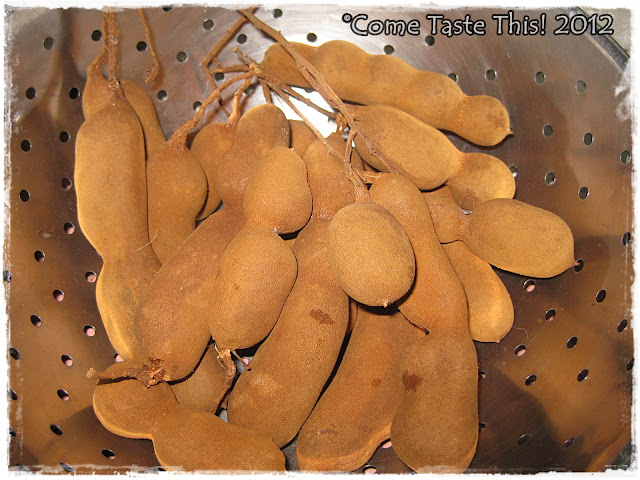Hi everyone, I hope you are all well. Haven't written for a while, but that's only because of the job's demands. My food adventures have not stopped, however, and today's blog deals with one of those ingredients that I hadn't interacted with in years... fresh pigeon peas!
A few weeks ago, I had come home from work to a really surprising sight: Errol was on the couch shelling (opening) pigeon peas, seen here... (aren't they gorgeous?)
He told me that a woman was going around St. Clair, selling them for TT$20 for three pounds, which he couldn’t pass up. (So glad he didn’t!) It had been ‘donkey years’ since we shelled fresh pigeon peas, and from the moment I had grabbed the first pod I was catapulted back to my youth, sitting on the floor with my Granny as she sat and shelled from the handful she had placed in her skirt, and me, always imitating and trying in vain to shell and hold the plucked peas in her hand just she did. My small hands couldn’t hold as many, obviously, and I always got angry when peas kept dropping. She would say, “Halcy, mind what you doing,” and I would reply meekly with a quick “Yes Granny,” and marvel at her hands moving like a machine… reach, open, pull… reach, open, pull… when she eventually released the peas she held captive in her palm, the sound of the them hitting the bowl was like no other on earth.
That night, as I watched the antics of the guys on Big Bang Theory, I took pleasure in making my own sounds as I scattered my own into the bowl. I’m sure Granny would have been pleased, hahahaaa!
When the following Saturday came, I thought long and hard about what I was going to do with them. It eventually hit me after a long rainy morning: a classic pigeon pea soup – well, Granny’s version anyway. A quick trip to the corner shop for a couple of ‘special’ ingredients and I was ready to get started on my trip down memory lane…
 |
I started with two cups of the shelled pigeon peas. They were washed, and placed in a pot with 4 cups of water to boil with two crushed cloves of garlic. |
 |
While that was going on, I squeezed the juice of half a lemon over a pound of fresh cubed beef – straight from the supermarket. |
 |
The pigeon peas were going well here. The garlic was close to disintegrating and the grains were losing their lovely colours – I always wish they didn’t disappear, hahaha! |
 |
Next, I added the softened meats and their liquid to the boiled pigeon peas and stirred them together, and sprinkled in half a packet of coconut milk powder. |
 |
As you can see, the pigeon peas are not at the ‘burst’ stage as yet, but they did soften up nicely. |
 |
Ta-dah! Here's the finished dish; my lovely bowl of Pigeon Pea soup. |
 |
Had to dive right in! |
So there you have it, a classic pigeon pea soup that’s guaranteed to make you remember the good old days. Everyone thoroughly enjoyed this one and I thanked my lucky stars that I only cooked half of the pigeon peas. I still have the remainder in the freezer, so when the vaps hits me again, I can whip it up at will.
Hope you enjoyed my trip down memory lane and I look forward to sharing another food adventure with you. If you want the detailed recipe for this, I will be glad to send it to you; just email me at naiclah@gmail.com.
Take care of yourselves as always and don’t forget to mind the pot!





























